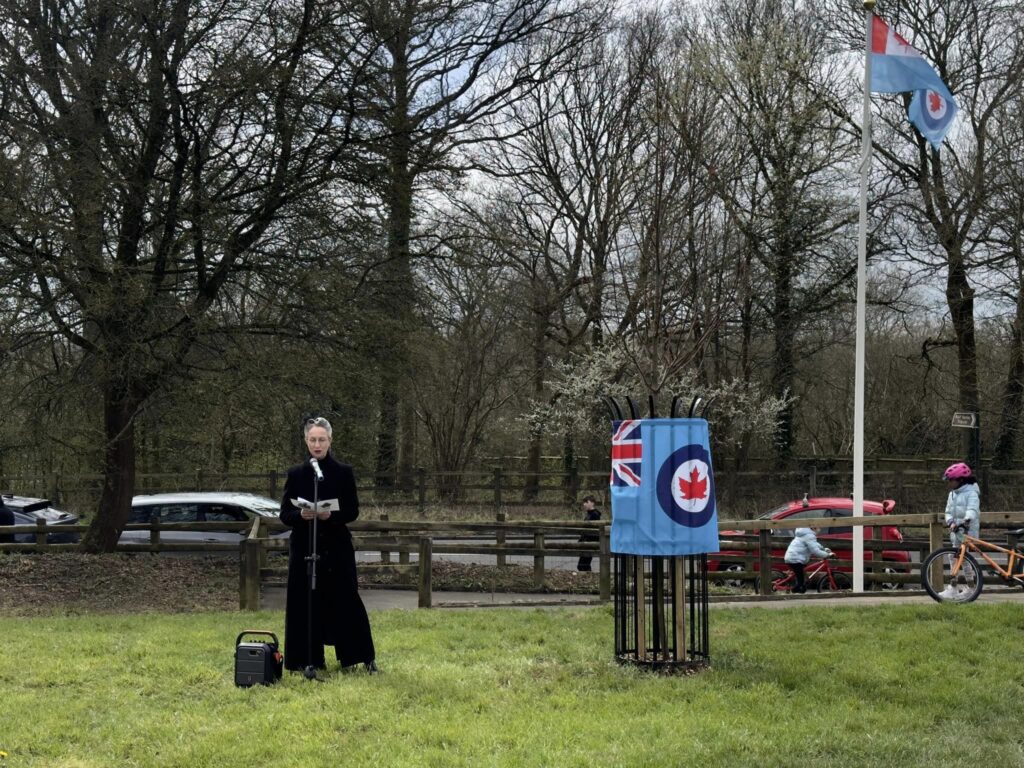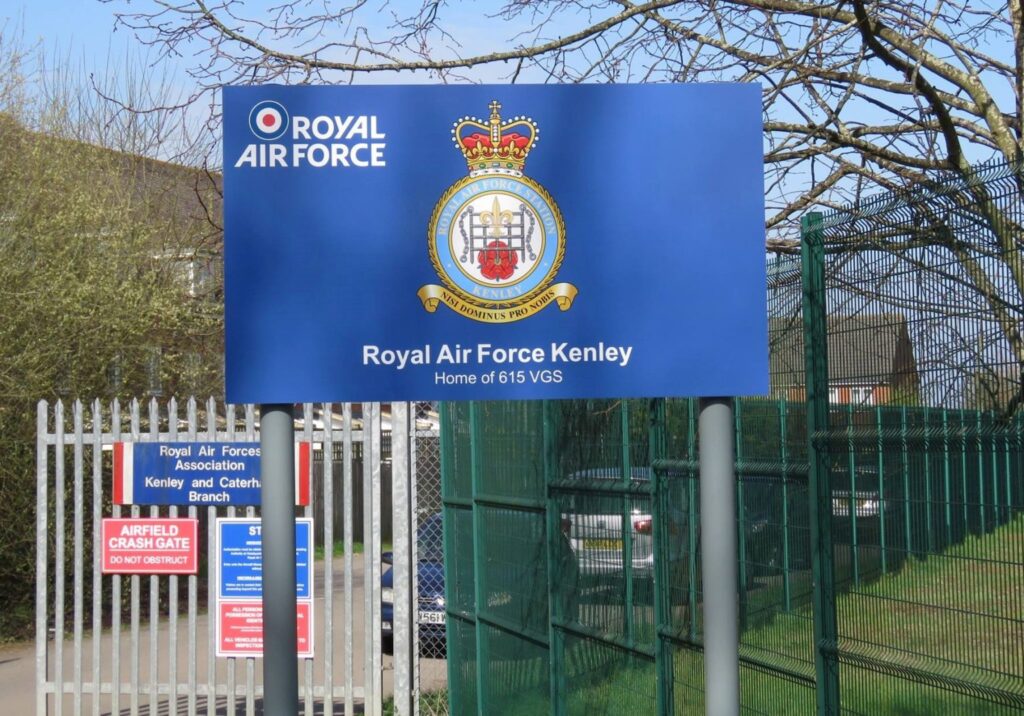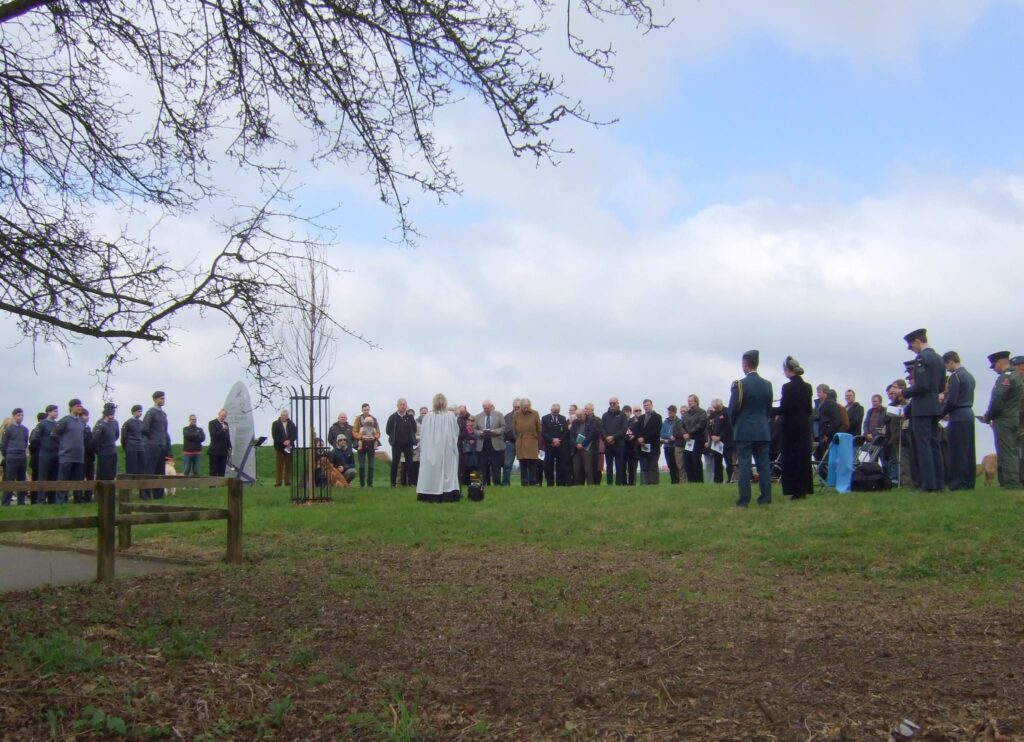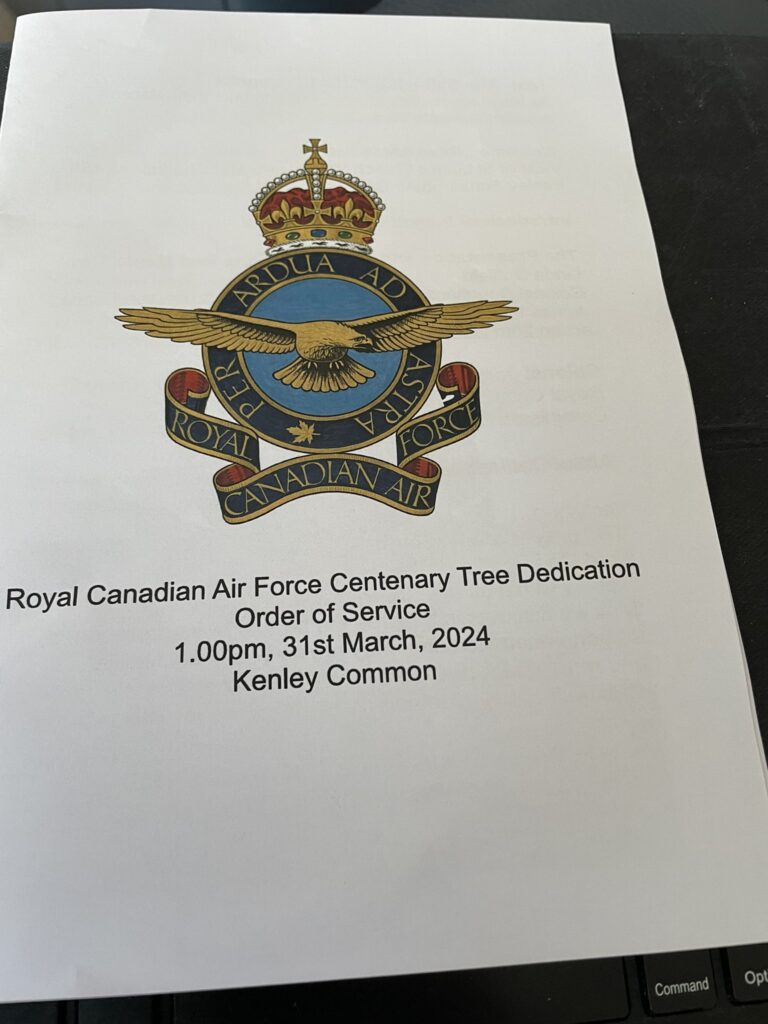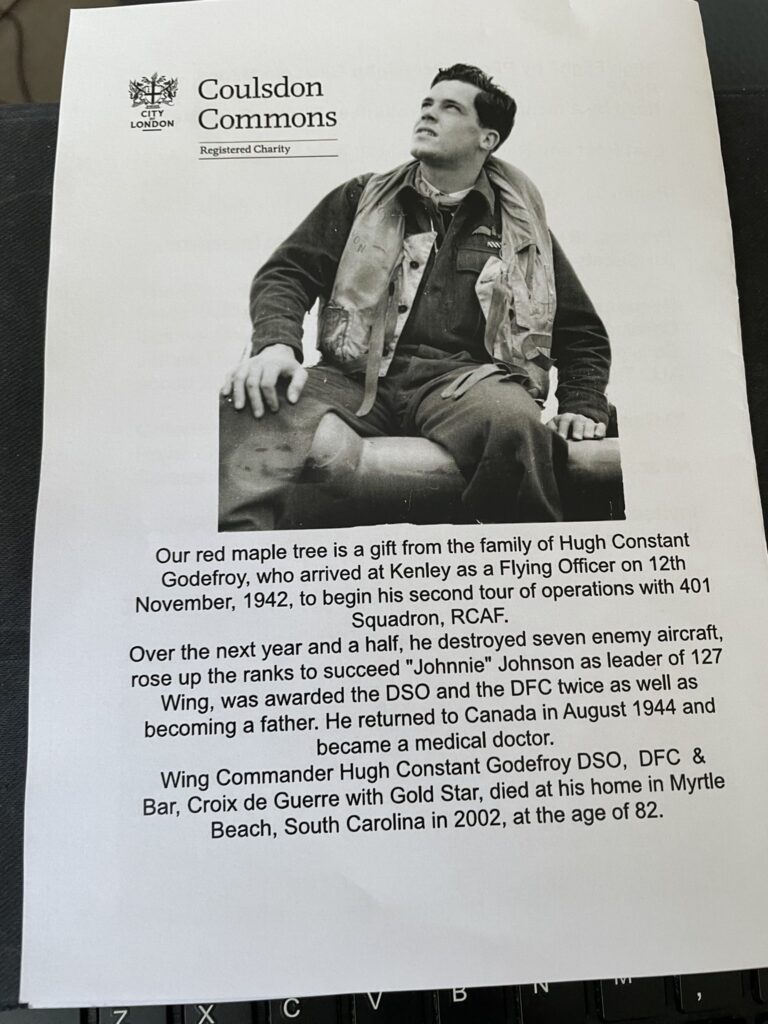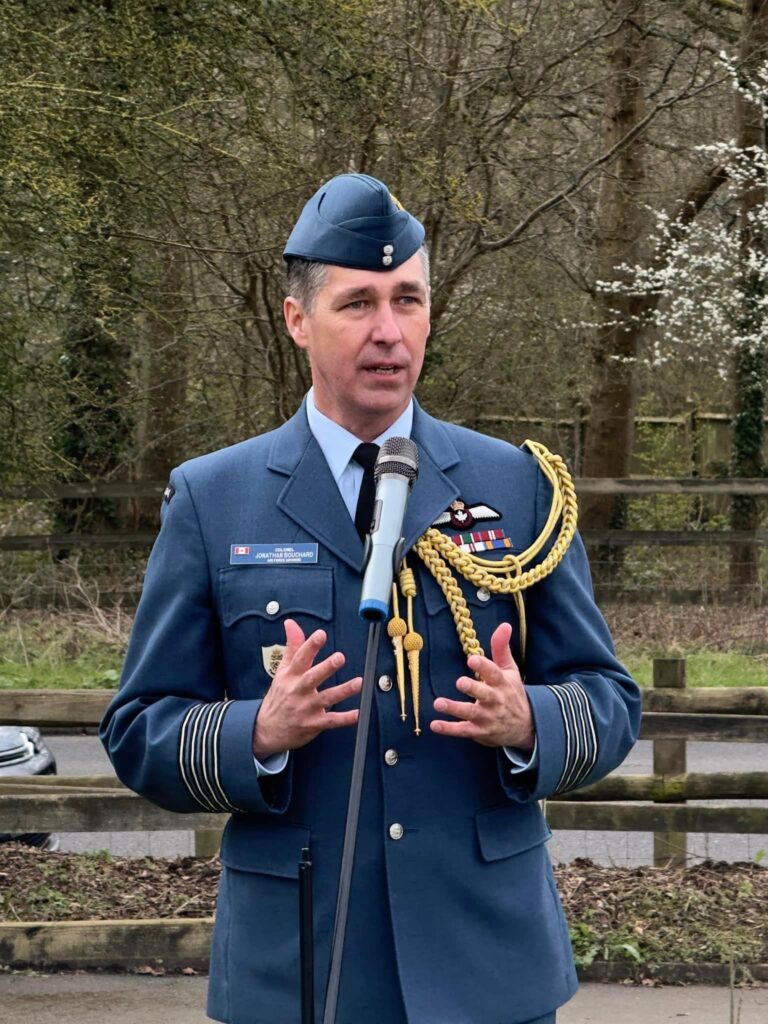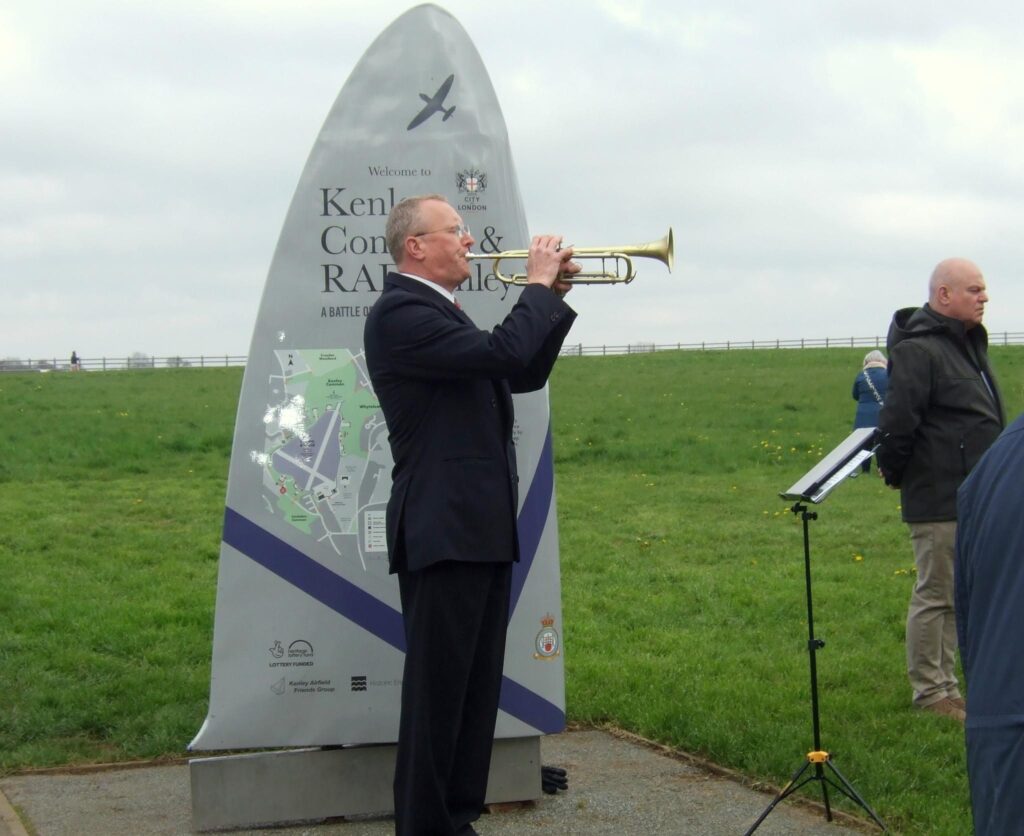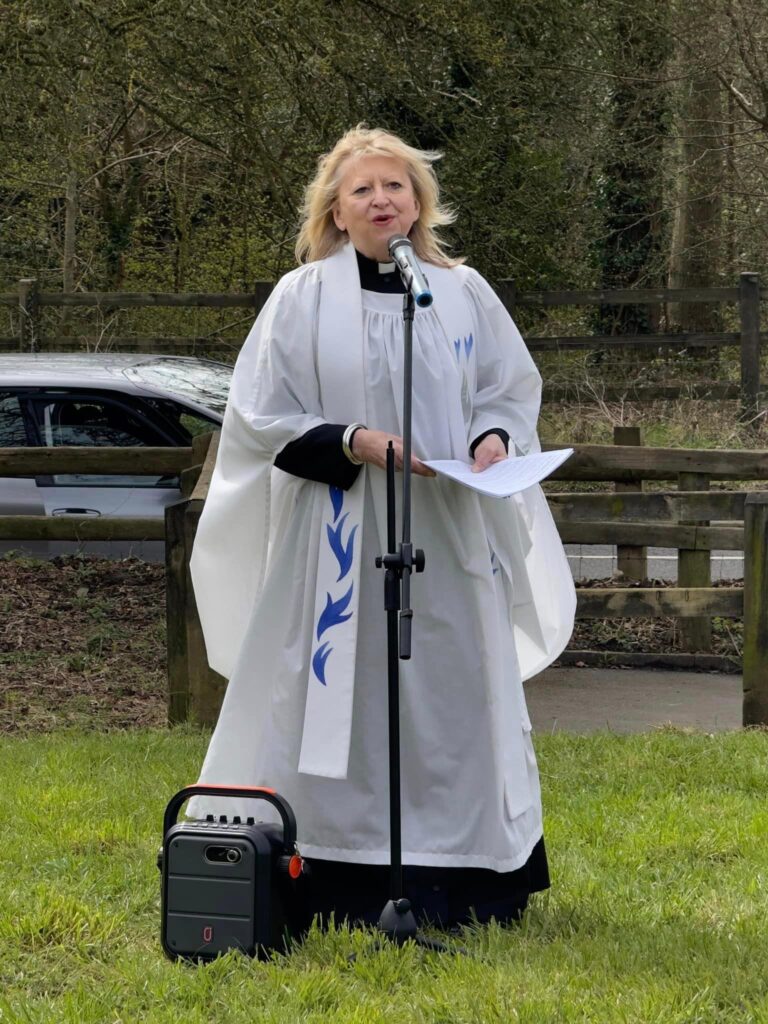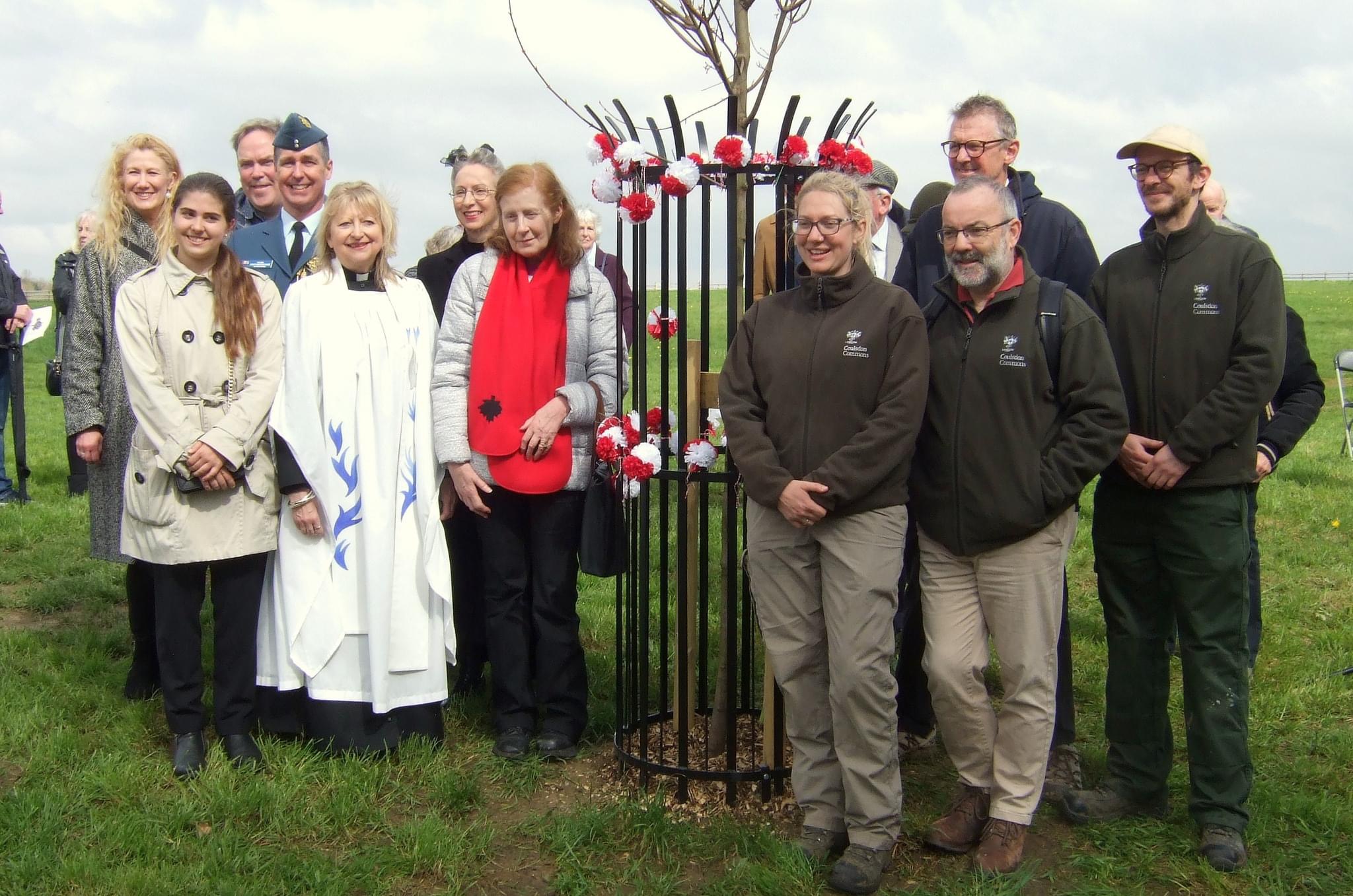1 April 2024 marks 100 years of service for the Royal Canadian Air Force as a distinct military element. To mark the occasion, the City of London Corporation planted a red maple tree, donated by the family of former Wing Commander Hugh Constant Godefroy, who arrived at RAF Kenley as a Flying Officer on 12th November 1942 to begin his second tour of operations with 401 Squadron Royal Canadian Air Force (RCAF).
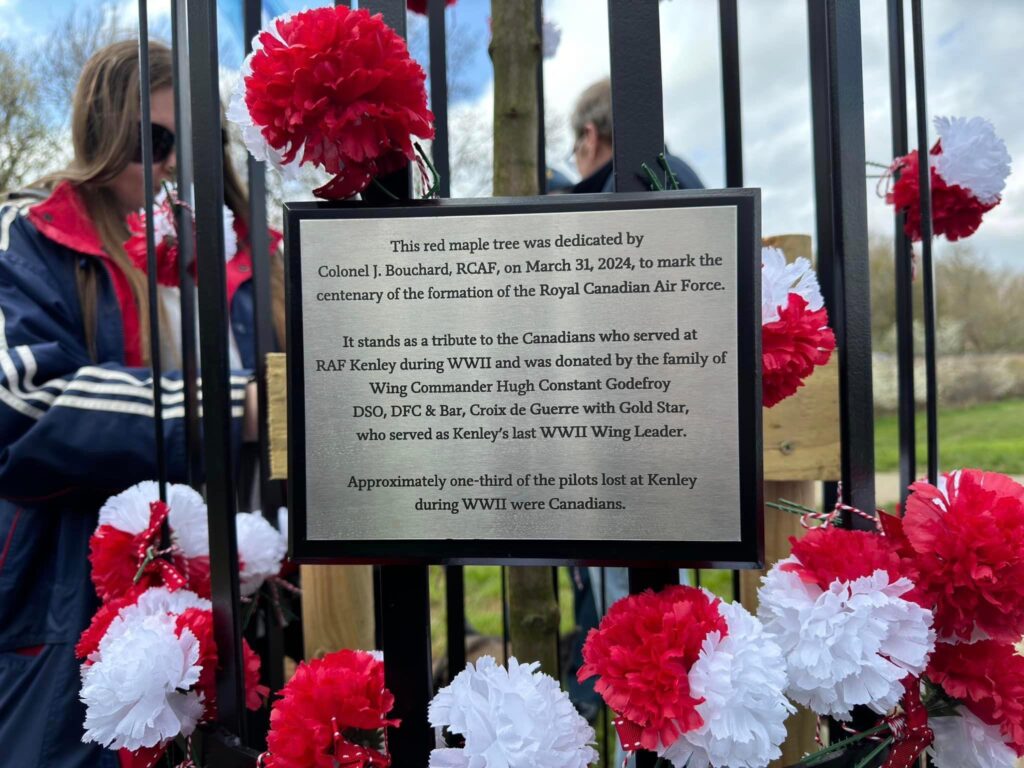
RAF Kenley played a significant role in the Battle of Britain, alongside RAF Croydon and RAF Biggin Hill, as UK’s three RAF stations specifically tasked with the defence of London during World War II (WWII) against the German Luftwaffe. Kenley was home to 8 RCAF Fighter Squadrons during WWII and Canadians made up approximately one third of the pilots who lost their lives in that epic struggle to preserve our freedom.
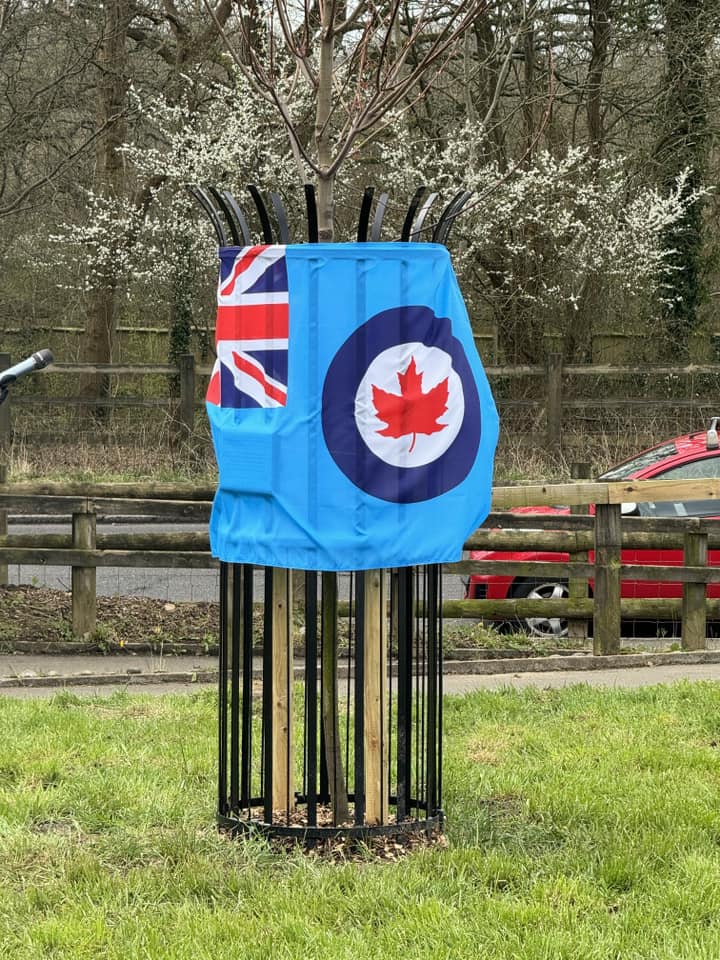
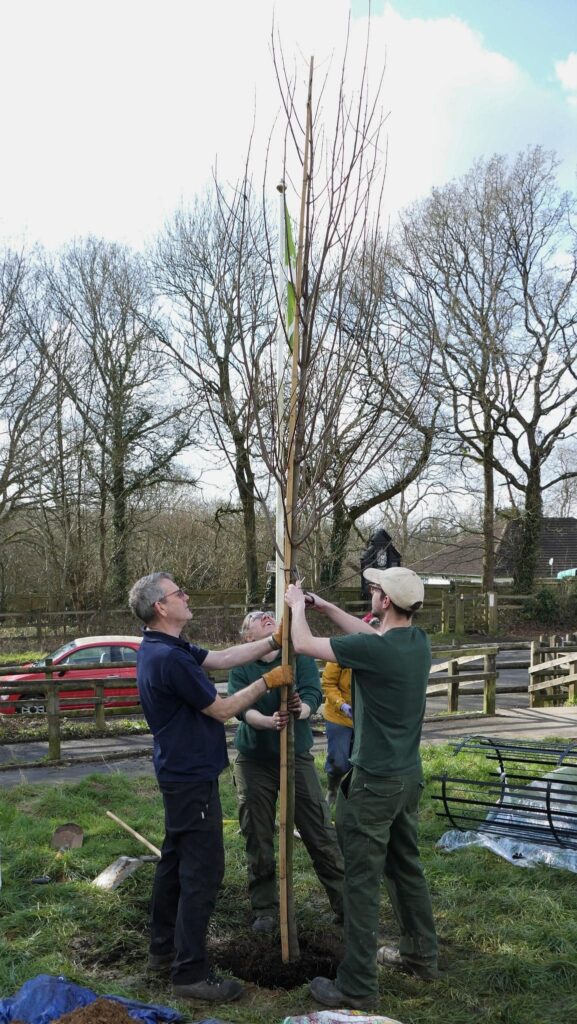
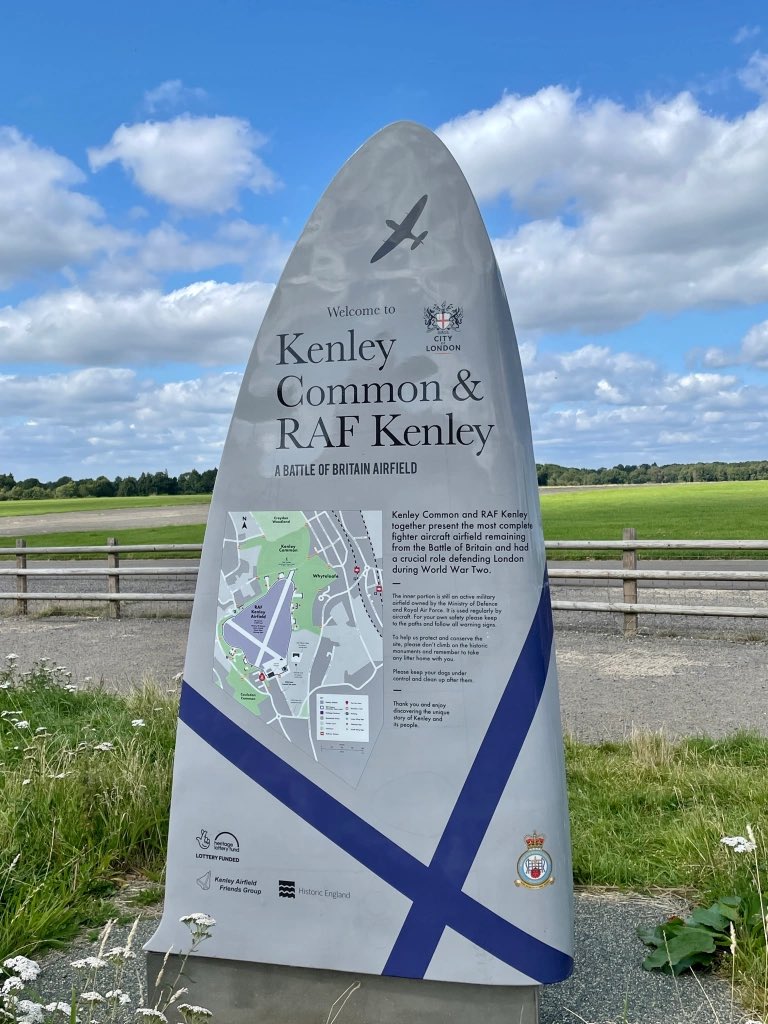
The City of London Corporation purchased 347 acres at Kenley Common in 1883 as public recreation space. However, on 17th November 1921, an agreement was reached between the UK Air Council and the City of London, allowing the RAF to acquire part of the Common Land that constituted the aerodrome on the proviso that no buildings could be erected and that it had to be returned when the RAF no longer needed it. The Ministry of Defence continue to work closely with the City of London Corporation on the maintenance of the site today, which remains a working RAF base.
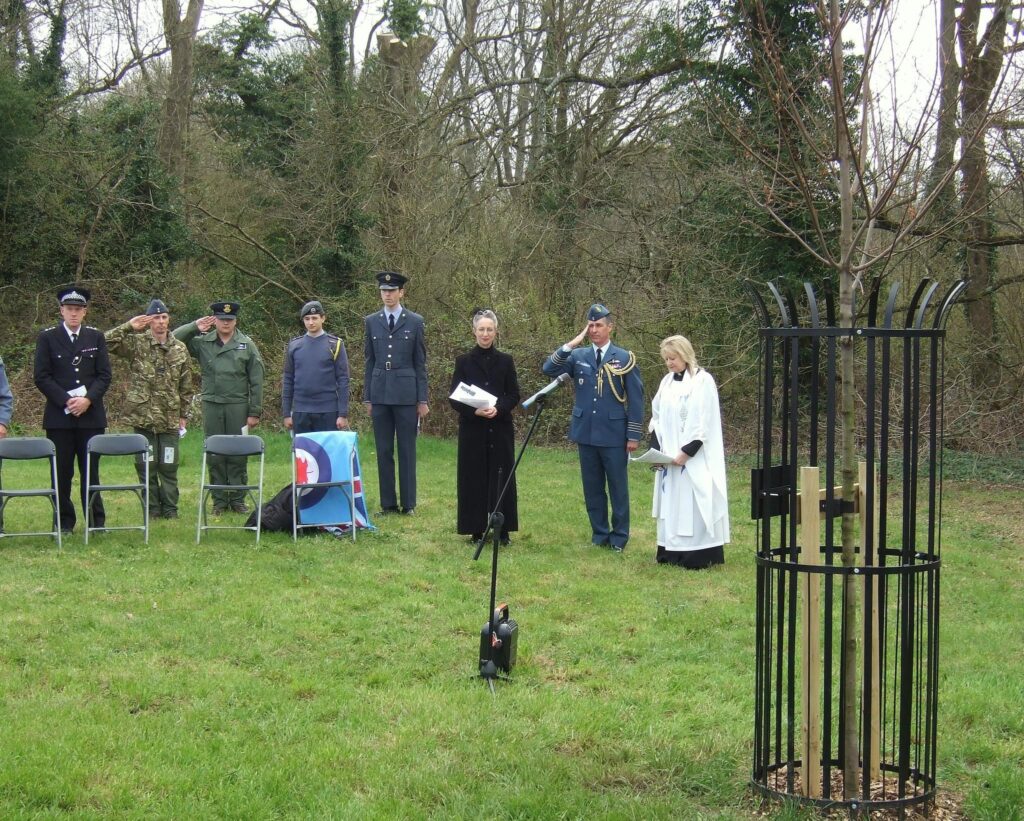
On 31st March 2024 at 1pm, the Reverend Annie Kurk, of St. Luke’s Church Whyteleafe, led a short service, followed by a tree dedication ceremony by Colonel Bouchard (Air Advisor to the High Commissioner of Canada).
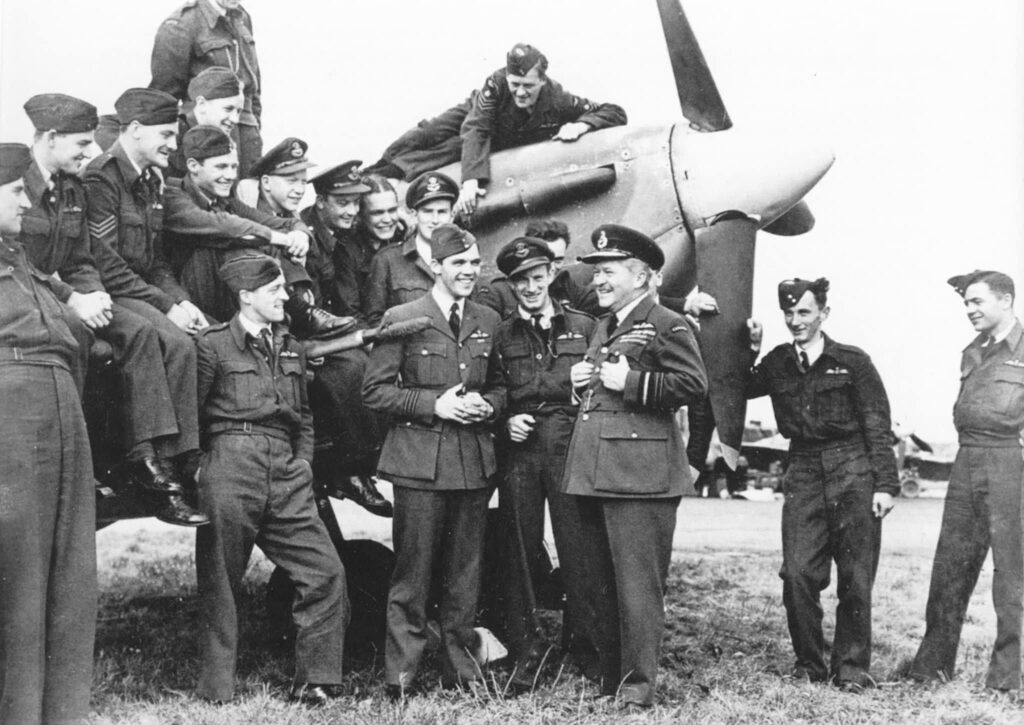
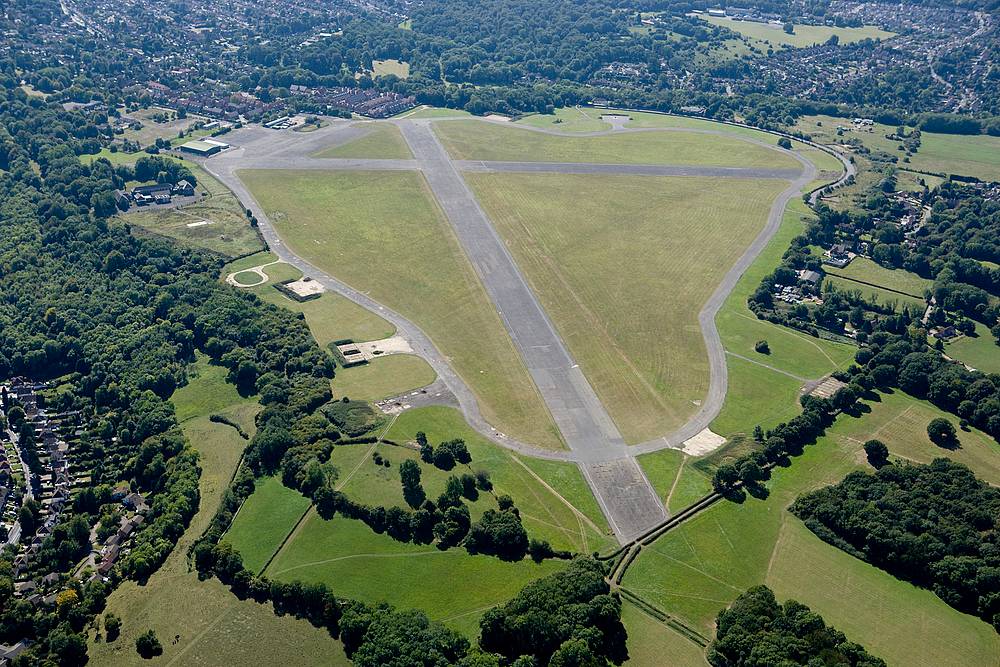
In addition, the Kenley Revival Project team have created a memorial trail around the perimeter of the airfield comprising information panels which will remember the 47 Canadians killed while serving at RAF Kenley during WWII, plus two Americans, one Barbadian and a British man who lost their lives serving with RCAF units. You can view an interactive map of the trail here.
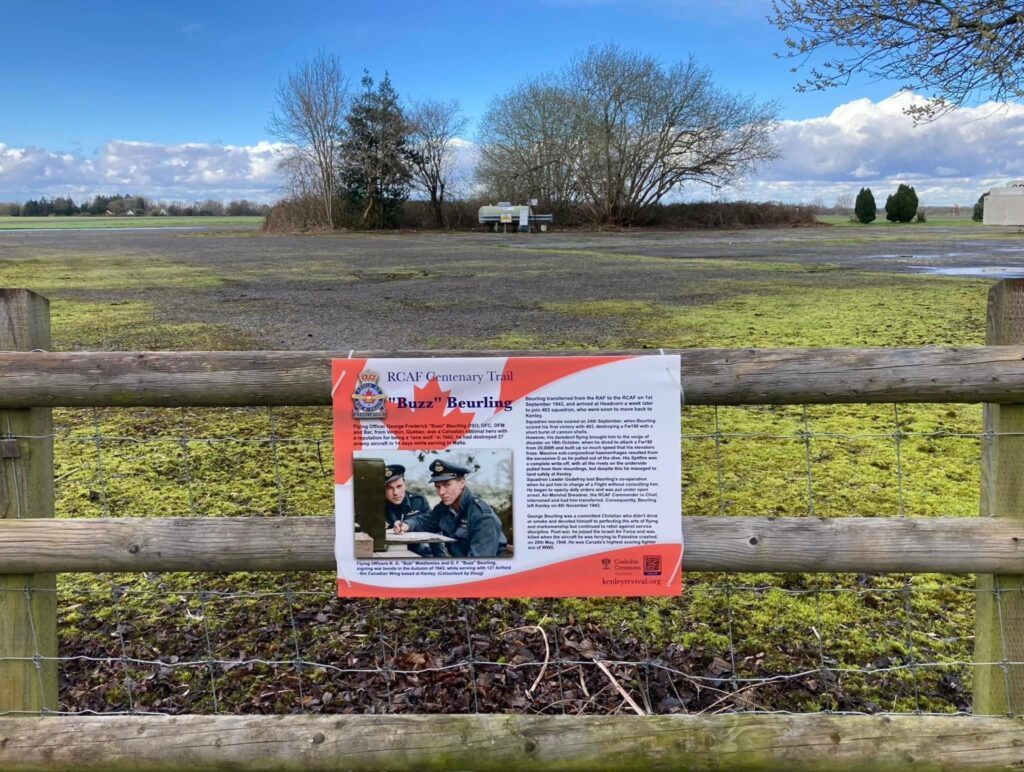
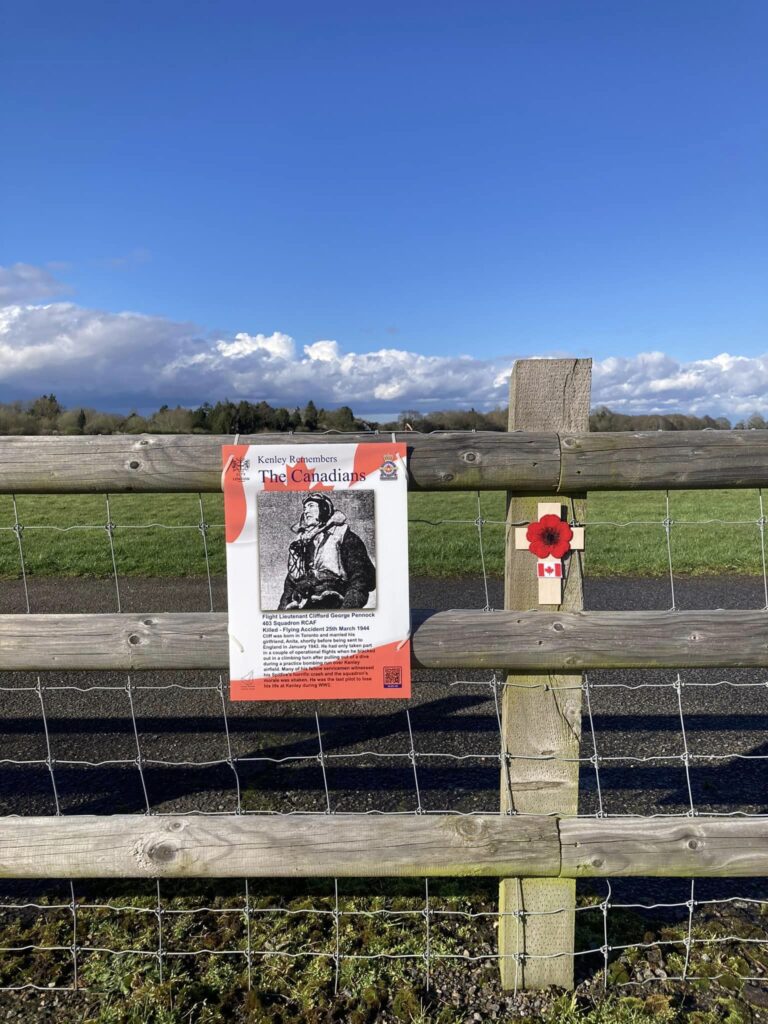
English Heritage identified Kenley as “the most complete fighter airfield associated with the Battle of Britain to have survived”. Unlike other fighter stations that were modernised, Kenley has retained its original runways, giving visitors a true flavour of its historic purpose. 10 of its 12 ‘fighter pens’ or Blast Bays remain in the Croydon section of the site. Although the core remains in Ministry of Defence ownership, substantial areas on the perimeter were transferred back to the Corporation and public access restored to the outer areas of the airfield.
